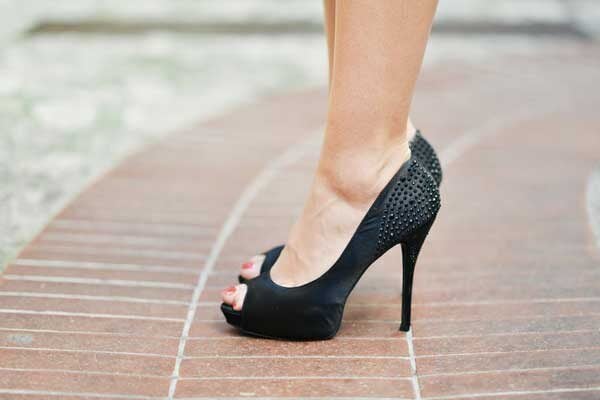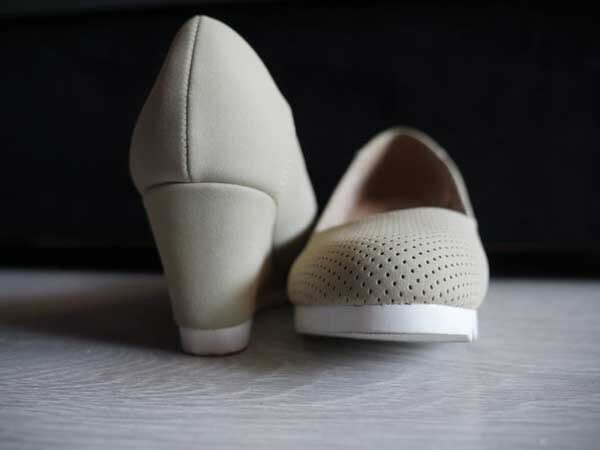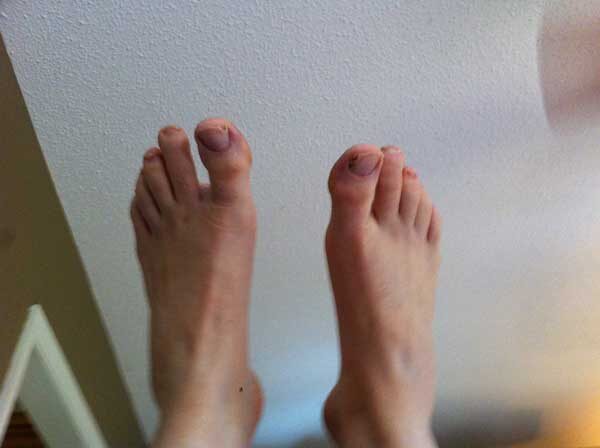When it comes to our outfits, the shoes we wear are often an afterthought. While us women love to keep a closet stocked with the things, they rarely determine what we wear. Most times, we pull out the closest pair to hand, or find something which works once everything else is in place. After all, who has time to worry about shoes on top of everything else?
In truth, though, it wouldn’t be unreasonable to argue that our shoes are the most critical parts of our outfits. While everything else we wear simply helps us portray the right image, it’s our shoes which get us from point A, to point B. Those shoes are what help propel you in your career, travels, and personal life. They’ll take you up on to the dance floor, and get you home again at the end of the night. When you think about it like that, these babies are actually pretty crucial.
Which is why it’s so important that you make the right choices when it comes to your footwear. When you’re in a decent pair of shoes, there’ll be no stopping you. Your boots were made for walking, and that is definitely what they intend to do. Make the wrong decision, however, and you won’t be getting anywhere in a hurry. Instead, you’ll have to hobble along with blisters galore. In many ways, you could say that the shoes you choose determine whether you succeed or not. Because society dictates it, you can’t even ditch that lousy pair and go barefoot. The only hope is that someone has some flats you can borrow.
Of course, you could avoid this altogether by avoiding shoes you can see will cause you issues. Admittedly, this isn’t always an easy task. The most perfect pair of shoes could end up causing problems down the line. Equally, a pair which looks and feels terrible when you put them on could end up being the most comfortable imaginable. That said, there are some signs which should always make you wary. To help you avoid them, we’re going to look at just what those are.
Heels
Be honest, ladies; we love a good heel, but when it comes to comfort, this is not the one. In years gone by, it wasn’t unusual for women to wear heels everywhere they went. But, this is fast changing, and with good reason. No matter how you paint it, heels hurt your feet. In fact, they can do some real damage. Issues reported from continual heel wearing include hammer toes and even ingrown toenails. In some ways, it’s fair to say that the height heels afford us makes them ideal power shoes. But, even being tall won’t make you feel great if you can barely walk anywhere.
With that in mind, it’s worth turning away from heels the majority of the time. If you do insist on suffering for the sake of fashion, always take a spare pair of flats so that you can give your feet an occasional break. It’s also worth looking out for wide heels, rather than thin ones. Shoes with more coverage on top also offer more support, so they’re not a bad idea, either.

Boots
This one may come as a surprise to many, but boots are also a particular problem area. Disclaimer: this isn’t always the case. As can be seen from the women’s shoes on sites like Alegria, there are comfortable boots available. There have to be. After all, these are a go-to for hikers. But, it would be a mistake to assume that every boot out there is suitable for long walks. In fact, fashion boots are notorious for causing blisters, especially in the early days. Even boots which are meant for walking, such as Doc Martens, can cause issues if you don’t wear them often. The only way to stop blisters from these babies is to wear them on a regular basis and soften the leather.
So, how can you tell whether a pair of boots is going to hurt you or not? For the most part, it’s relatively easy to see. The main issue with boots and comfort is how enclosed they are. There’s no getting past the fact that your heel, and even the top of your foot, are going to rub during the day. But, if there’s soft padding on the inside of the boot, you can rest easy you’re onto a winner. Most walking boots are also sure to serve you well, just make sure they are specific to the purpose. Any other boots, and you might want to think twice. Try them on and see what you think, but if you feel any rubbing, it’s a sure sign to steer clear.
Sandals
While we’re talking about specific types of shoes, it’s worth mentioning sandals. It should be evident that you want to avoid these if you’re facing any form of long walk. For the most part, sandals do not spell good news for your feet. Within half an hour of walking, you’ll have blisters on your heels, toes, and even the tops of your feet if you aren’t careful. Add to this the fact that we often wear sandals on hot days, and you’re in for some sweaty and sore nastiness.
If you do want something a bit lighter for your feet, you would be better off aiming for flats which allow your feet to breathe. These will be much more comfortable, while still ensuring you don’t overheat. If you do insist on sticking with sandals, choose options with soft leather and enough support. These are least likely to leave you uncomfortable.
The wrong material
Of course, even when you think you’re buying shoes which don’t fall into the above categories, you could find yourself in trouble. The fact is, even shoes which are meant to be good for your feet may do you damage if you don’t consider the materials they’re made from. Some materials just aren’t suitable for walking. No matter what you do, you won’t be able to stop these from rubbing in all the wrong places. Materials to look out for include stiff leathers and hard plastics, both of which can wreak havoc. As mentioned above, leather which you don’t wear often can even continue to cause issues down the line as it remains stiff and unyielding. And, naturally, hard plastics are near enough impossible to wear in at all. Also, materials which stop your feet from being able to breathe can spell trouble. When things get sweaty in there, it’s more likely that your skin will rub and blister. After all, that moisture will make your feet much softer for the taking!

Your toes can’t move
It should be evident that shoes which don’t allow your toes to move are going to cause issues down the line. But, many of us fall into the trap of buying shoes which squash our toes like sardines in a can. This is often the case when we buy heels, but even trainers and other comfortable shoes can fall foul here. The trouble is, once we spot a pair of shoes we love, we convince ourselves the fit is a good one, even when it might not be. But, before you make that big purchase, consider seriously whether you can wiggle each of your toes without obstruction.
If not, this should be an instant no-go. Aside from putting you at risk from blisters, continual squashing can do real damage to your feet. Some of that damage can even be long-lasting. Issues such as crossover toe, and even eventual arthritis, could be on your cards if you don’t heed this advice. As a rule, you should be able to wiggle your toes, and also fit a thumb’s width between the end of the big toe and your shoe. If not, either try a larger size or look at a different style.
There isn’t enough support
As touched upon when we spoke about sandals, support is also incredibly important when it comes to your shoes. If you don’t get adequate support, you could experience issues with more than your feet. This can also do damage to the muscles in your legs, as it’ll make you work extra hard. And, of course, your feet won’t come off too well either. While sandals are the most common culprits for lack of support, this is a crime that shoes such as flats are often guilty of, too. Anything which doesn’t encase your foot could cause issues.
And, support is essential for more than the casing. It also comes from the padding and heel of a shoe. Highly supportive options will absorb the impact of your foot hitting the pavement, as well as padding your foot from anything you step on. So, always look out for shoes with sturdy heels and adequate padding inside. It may seem like an unnecessary step now, but you’ll thank yourself when you feel as though you’re walking on air.














